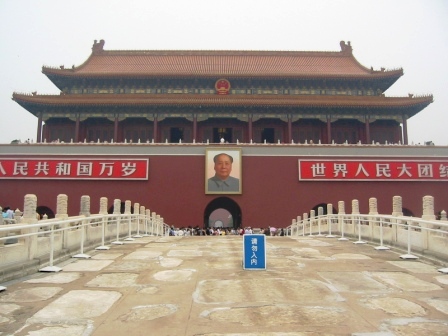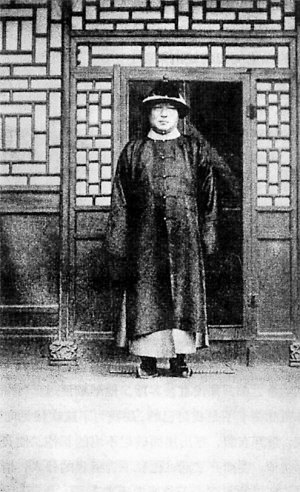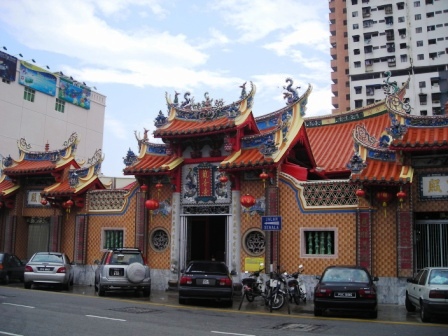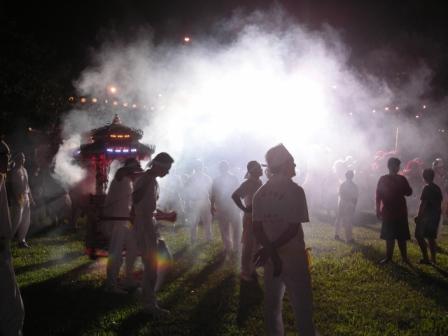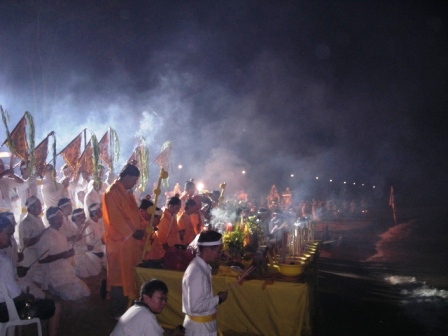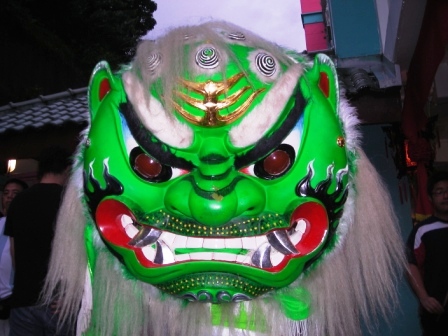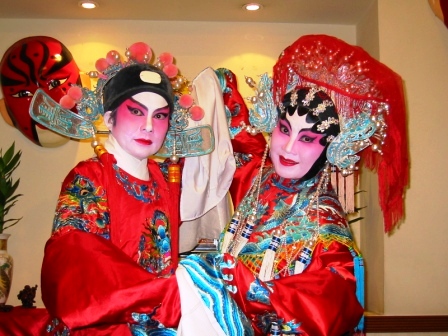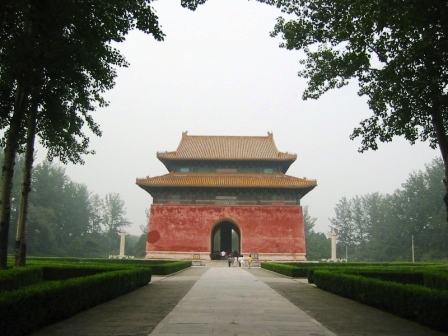
| Home | Chinatowns of the world | Festivals | Culture | Food Culture | History | Countries |
| Chinese Religion | Tours | Sitemap | Documentaries | About | Contact |
Ming dynasty remembered 思明
For almost a decade, the Ming court was caught between “roving bandits” inside the empire and an aggressive Manchurian state in the north. The court fortified the Great Wall to defend China against the Manchurians but in the end, the Ming dynasty was brought down by the peasant armies of Li Zhi Cheng. On 25 April 1644, rather than surrendering to Li Zhi Cheng, Emperor Chong Zhen, 崇祯皇帝 committed suicide at the coal hill just behind the Forbidden City. He was only 33 years old when he died. Li Zhi Cheng declared the founding of a new dynasty call the Shun 顺, but his new dynasty was still dependent on the support of Ming warlords and generals. One of the most important General was Wu San Gui, 吴三桂, who guarded the Ming border with Manchurians. He decided to rebel against Li Zhi Cheng and requested for Manchurian help to do so. After defeating Li Zhi Cheng, the Manchurians declared themselves as the new ruler and established the Qing dynasty, 满清皇朝, in China. The fall of Ming ended 236 years of their rule in China and the Ming dynasty became the last dynasty to be ruled by ethnic Han Chinese as the succeeding Qing dynasty was founded by Manchurians. The Qing dynastyThe Qing court emphasized that they were not conquerors but had entered China to “help” overthrow the rebel Li Zhi Cheng. They buried Emperor Chong Zhen and in 1725, appointed a member of the Ming royal family as the “Marquis of Extended Grace”, 延恩侯, whose duty was to perform rituals for his imperial ancestors, the former Ming Emperors. Despite acts of goodwill, the Qing court was brutal in suppressing any challenge to their rule. After the suicide of Emperor Chong Zhen, the Ming princes and loyalists formed the South Ming regime 南明政权 in an attempt to restore the Ming dynasty. The resistance movement took the Qing court almost 40 years to pacify. The last of the South Ming Emperor fled into Burma but was captured and executed together with the crown prince. The Qing court also had to deal with the famous Ming loyalist Zheng Cheng Gong, 郑成功 who displaced the Dutch from Taiwan and use it as a base to resist the Qing. When the Qing court managed to capture Taiwan, they claimed it was achieved with divine help from Mazu, 妈祖 the sea goddess. During these chaoses, many civilians fled China to join or established overseas Chinese communities in Japan and Vietnam. In Vietnam, these Chinese referred to themselves as Ming Xiang 明香. Overthrow the Qing and restore the Ming, 反清复明Although the Manchurians were able to rule China for 268 years, the call to overthrow the Qing and restore the Ming, 反清复明, persisted throughout their rule. Some elements of these practices evolved into an art form or were incorporated into religious rituals and continued to be practiced to this day. Many cell groups emerged to try to overthrow the Qing dynasty and their organization structure eventually became the basis for secret societies operating in China and among Overseas Chinese. The worship of 9 Emperors 九皇大帝 is believed to be related to this anti Qing movement. In one of the versions, the Ming loyalists escaped to Thailand and then to Penang, Malaysia where they began the worship of 9 Emperor Gods. The Green Lion dance 青狮 emerged to symbolize the Qing army and was believed to have functioned as a form of training for Ming loyalists. When the Qing dynasty was overthrown in 1912, Mr. Gan De Yuan, 干德源, performed a ritual dismembering of the Green Lion to symbolize the defeat of the Manchurians. Some martial arts schools also trace their early history to Ming resistance fighters.
After the founding of People’s Republic of China, an area in Xiamen was named as “Si Ming”, 思明, (in memory of Ming) to commemorate Zheng Cheng Gong’s resistance movement. In 1957, the Cantonese opera play writer, 唐 涤 生, premiered “Patriotic Princess”, 帝 女 花, in Hong Kong where it became an instant hit. The main character Princess Chang Ping 长平公主 and her husband offered themselves as hostages to the Qing court in exchange for the release of the former Ming crown prince. On their wedding night, they committed suicide as an act of political resistance. Patriotic Princess inspired many similar movies for more than half a century and is still a popular theme. The Cantonese opera version continues to be performed in Hong Kong and overseas Chinese societies.
Transmission of historical memoriesFor almost four centuries, events relating to the fall of Ming continued to be transmitted and to be remembered through ritual and symbolic acts. This transmission of historical memory occurred in spite of heavy censorship by the Qing court in topics relating to the fall of the Ming dynasty. Dissidents faced heavy penalty which explains the lack of documentations on the origins of these events. These cultural practices continued after the fall of Qing dynasty in 1912 and to this day. They offer clues to explore topics such as political resistance, appropriation as well as re-conceptualization of cultural identities and the fusion of history and media. References: F. W. Mote. (November 15, 2003) Imperial China 900-1800. Harvard University Press J.A.G. Roberts. (October 25, 2003) The Complete History of China (Paperback) Sutton Publishing; New Ed edition Lynn Pan (Editor). (April 30, 1999) The Encyclopedia of the Chinese Overseas. Harvard University Press Lynn Struve. (2007). The Southern Ming 1644-1662. Shanghai Bookstore Publishing House Reginald F. Johnston. (1934) Twilight in the Forbidden City, Victor Gollancz Ltd., a division of The Orion Publishing Group. Related articles:
|
|
| Join us on | Youtube | |||
| Copyright © 2007-24 Chinatownology, All Rights Reserved. | ||||
